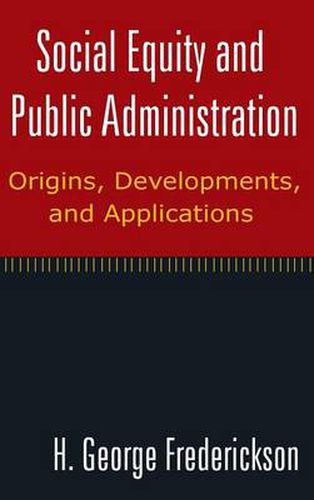Readings Newsletter
Become a Readings Member to make your shopping experience even easier.
Sign in or sign up for free!
You’re not far away from qualifying for FREE standard shipping within Australia
You’ve qualified for FREE standard shipping within Australia
The cart is loading…






This book is designed to be the definitive statement on social equity theory and practice in public administration. Social equity is often referred to as the third pillar in PA, after efficiency and economy. It concerns itself with the fairness of the organization, its management, and its delivery of public services. H. George Frederickson is widely recognized as the originator of the concept and the person most associated with its development and application. The book’s introduction and chapters 1-4 offer general descriptions of social equity in terms of its arguments and claims in changing political, economic, and social circumstances, and trace the development of the concept over the past forty years. Chapters 5-9 provide applications of social equity theory to particular policy arenas such as education, or to specific public administration issues such as the range of administrative discretion, the legal context, the research challenges, and social equity in the context of time and generations. Chapters 10 and 11 describe the current state of social equity and look towards the future.
$9.00 standard shipping within Australia
FREE standard shipping within Australia for orders over $100.00
Express & International shipping calculated at checkout
This book is designed to be the definitive statement on social equity theory and practice in public administration. Social equity is often referred to as the third pillar in PA, after efficiency and economy. It concerns itself with the fairness of the organization, its management, and its delivery of public services. H. George Frederickson is widely recognized as the originator of the concept and the person most associated with its development and application. The book’s introduction and chapters 1-4 offer general descriptions of social equity in terms of its arguments and claims in changing political, economic, and social circumstances, and trace the development of the concept over the past forty years. Chapters 5-9 provide applications of social equity theory to particular policy arenas such as education, or to specific public administration issues such as the range of administrative discretion, the legal context, the research challenges, and social equity in the context of time and generations. Chapters 10 and 11 describe the current state of social equity and look towards the future.